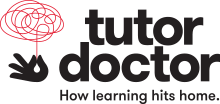In this article, we’ll understand how to support neurodiverse learners – ADHD, autism, dyslexia, and more – through expert strategies and thoughtful tutoring that builds confidence, calm, and growth.
Our Expert

Becky Ward
Education Experience Specialist at Tutor Doctor
Becky Ward is an Education Experience Specialist at Tutor Doctor and a certified teacher with qualifications in special education. With decades of tutoring experience, she develops educational tools and provides guidance to tutors and franchisees, blending research-based insights with practical strategies. Her work centers on supporting neurodivergent learners with empathy, clarity, and confidence.
Table of Contents
What Is Neurodivergence?
Neurodivergence refers to the natural differences in how people think, learn, communicate, and experience the world. This can include things like ADHD, autism, dyslexia, and other ways of thinking and processing that aren’t always recognized or supported in traditional learning environments.
Being neurodivergent isn’t something that needs to be fixed—it’s just another way of being. These differences can come with both challenges and strengths, and no two individuals are alike. When we take the time to understand and support these differences with care and curiosity, we create a more inclusive learning environment where every student has the chance to thrive.
Roughly 1 in 5 students in the U.S. has a learning or attention difference, such as ADHD or dyslexia. That makes these types of differences not only common, but essential to recognize and support—especially in educational settings.
Whether you’re a parent hoping to better understand how some children experience the world or a tutor looking for ways to support learners who think and learn differently, expanding your understanding of neurodiversity is a valuable step.
This guide shares practical ways to support neurodivergent learners with empathy, clarity, and confidence. It draws on insights from Becky Ward, Education Experience Specialist at Tutor Doctor. Becky is a certified teacher with qualifications in special education and decades of tutoring experience. In her role, she supports tutors and franchisees by developing educational tools and offering guidance rooted in both research and real-world practice.
Why Neurodivergence Feels More Common Today
The number of students being identified as neurodivergent has grown in recent years—not because more students are developing differently, but because we’ve become better at recognizing and understanding those differences.
There are a few key reasons behind this shift:
- Parents, educators, and healthcare professionals are more informed about what to look for. Behaviors that might once have been seen as laziness, defiance, or disorganization are now understood as possible signs of a neurodevelopmental difference.
- Diagnostic tools have improved, and criteria have evolved to better reflect the full range of how conditions like ADHD and autism can present—especially in groups that were historically underdiagnosed, such as girls and high-performing students.
- More families have access to professionals who can provide evaluations. Schools, pediatricians, and community clinics are referring students for assessment earlier than in the past.
- It’s becoming more socially acceptable to talk about learning and thinking differences. Families are more open to seeking help and sharing information, and students themselves are becoming more aware and starting to self-advocate earlier.
Earlier support often means better outcomes and fewer years spent feeling “behind.” For example, recent U.S. data shows that 1 in 31 eight-year-olds are now identified with Autism Spectrum Disorder. This is a shift from 1 in 36 just two years earlier—reflecting not a sudden increase in cases, but a stronger ability to recognize and support students early.
Common Neurodiversities and How to Support Them
No two learners are alike. But understanding how different neurodiversities might impact can help both parents and tutors create more effective learning experiences.
Autism Spectrum Disorder (ASD)
Autistic students often thrive on routine, structure, and clear communication. They may experience challenges with sensory processing, social communication, or emotional regulation. Many autistic people are able to focus deeply, recall information accurately, and/or immerse themselves in subjects they’re passionate about.
Learning strategies:
- Establish clear, consistent routines to help students know what to expect and stay focused during sessions
- Use direct and literal language and avoid idioms, sarcasm, or implied meaning, which can be difficult to interpret
- Minimize sensory distractions when possible by reducing noise, managing temperature, and limiting textures that may cause discomfort
- Give students time to process information and respond without pressure, allowing them to engage at their own pace
Autistic students bring unique perspectives, strengths, and ways of thinking to their learning. When parents and tutors approach each student with curiosity, patience, and a willingness to adapt, it creates a space where those strengths can shine—and where every student feels respected, understood, and valued for who they are.
ADHD (Attention Deficit Hyperactivity Disorder)
ADHD can affect attention, impulse control, working memory, and emotional regulation. At the same time, many students with ADHD are highly creative, think quickly and intuitively, and/or are capable of intense focus when they’re engaged.
Students with ADHD very commonly struggle with executive functioning, like organizing tasks, managing time, getting started on tasks, and prioritizing. These underlying skills are just as crucial as academic learning, and students often need additional support to identify and implement strategies that develop their executive functioning. ADHD can impact attention, impulse control, working memory, and emotional regulation. But it also often comes with creativity, verbal fluency, and intense focus when a student is engaged.
Learning strategies:
- Break tasks into smaller, manageable parts to reduce overwhelm and help students feel successful along the way
- Use visual aids and checklists to support focus, working memory, and task completion
- Include movement or brain breaks to help students reset and refocus between activities
- Keep sessions structured and consistent so students know what to expect and what’s expected of them
ADHD is one of the most common neurodevelopmental differences among students. In the U.S., nearly 1 in 9 children has been diagnosed with ADHD, and diagnoses have become more frequent in recent years as awareness and understanding have improved. This growing recognition helps families, educators, and tutors provide earlier, more targeted support.
Dyslexia
Dyslexia is a language-based learning difference that affects how the brain processes written and spoken language. It can impact reading fluency, spelling, and decoding—particularly the connection between sounds (phonemes) and letters (graphemes).
Students with dyslexia often have strong verbal reasoning, creative thinking, and storytelling abilities. They may struggle with reading and writing mechanics, but excel at big-picture thinking and making meaningful connections.
“Reading is a complex process, and for many students with dyslexia, it may take more time and support. That doesn’t mean they won’t get there—with the right strategies, they can build skills and confidence.”
— Becky Ward
Learning strategies:
- Use multisensory approaches such as tracing letters while saying sounds aloud to reinforce sound–symbol connections
- Incorporate audio tools, text-to-speech, and visual supports to make reading more accessible and reduce frustration
- Allow extra time and avoid timed reading or writing tasks to help reduce pressure and support confidence
- Separate writing mechanics from idea generation by focusing on big-picture thinking before spelling and grammar
Dyslexia is one of the most common learning differences, affecting an estimated 15–20% of the population. When families and tutors understand how it impacts learning, they can take meaningful steps to reduce barriers and help students thrive.
Dyscalculia
Dyscalculia is a learning difference that makes it harder for students to understand and work with numbers. They may struggle with basic math facts, comparing quantities, or following the steps in a math problem. It can also affect things like telling time, working with money, or remembering the order of steps in a task.
At the same time, many students with dyscalculia are creative, strong verbal communicators, and intuitive thinkers. They might understand the idea behind a math concept but still find it difficult to solve the problem or explain their thinking.
Learning strategies:
- Use visuals, hands-on tools, and real-world examples to make math feel more concrete and relatable
- Break math problems into small, clear steps so students can focus on one part at a time
- Give extra time for processing and problem-solving to reduce pressure and support confidence
- Create a supportive environment where mistakes are treated as part of learning, not something to avoid
Dyscalculia is often misunderstood as simply being “bad at math,” but it’s a difference in how the brain understands numbers. With the right strategies and encouragement, students can strengthen their skills and build their confidence.
Dysgraphia
Dysgraphia is a neurological difference that affects a student’s ability to express themselves in writing. It’s estimated to affect 7–15% of school-aged children, yet it often goes unrecognized. It can impact handwriting, spelling, grammar, punctuation, and the ability to organize thoughts on paper. Students may have strong verbal skills and great ideas but struggle to translate those ideas into written form.
This can be frustrating for students who know what they want to say but find writing physically or mentally exhausting. When supported with the right tools and strategies, they can build confidence in their ability to communicate and learn.
Learning strategies:
- Let students brainstorm aloud or use speech-to-text tools to help them express their ideas without the barrier of writing
- Use graphic organizers to support planning, structure, and sequencing of written work
- Focus on ideas and content first, saving grammar, spelling, and neatness for later drafts
- Offer alternatives to handwriting, like typing or verbal responses, when appropriate
Dysgraphia can make it difficult for students to demonstrate their knowledge, especially when writing is the main way they’re expected to show what they’ve learned. When we remove unnecessary barriers and offer the right tools and support, students can share their thinking with greater ease and confidence.
Dyspraxia (Developmental Coordination Disorder)
Dyspraxia—also known as Developmental Coordination Disorder (DCD)—is a neurological difference that affects motor coordination and planning. It can make everyday tasks like handwriting, using tools, tying shoelaces, or organizing materials more challenging. These challenges are rooted in how the brain coordinates physical actions, particularly those that involve fine motor skills.
Students with dyspraxia often demonstrate creativity, persistence, and strong problem-solving skills—especially when they’re given the time and space to approach tasks in their own way.
Learning strategies:
- Break down tasks into smaller, manageable steps with clear instructions
- Offer alternatives to handwriting such as typing or voice-to-text tools
- Provide extra time for written work or tasks that require physical coordination
- Use visual supports like checklists, diagrams, or modeled examples
Dyspraxia can affect how students manage daily tasks at home and at school, which can create frustration and erode confidence. Providing opportunities to do things a bit differently and leveraging students’ strengths can level the playing field and help students build their confidence and show how capable and knowledgeable they really are.
When Students Have More Than One Neurodivergence
It’s common for students to have multiple forms of neurodivergence. For instance, about 25–40% of children with ADHD also meet criteria for dyslexia—and vice versa. In fact, studies estimate that 60–100% of children with ADHD have at least one additional neurodevelopmental or mental health condition.
Having more than one diagnosis is also common in other combinations. For example, research suggests that 30–50% of students with dyspraxia also have dysgraphia, and that up to 30% of students with dyslexia experience writing challenges consistent with dysgraphia. These combinations can shape how students approach learning and daily tasks, and understanding how they impact a student can help parents and tutors more effectively support each student’s unique needs and foster their strengths.
Labels can help us recognize patterns and access resources, especially when a student has more than one form of neurodivergence. But no label can fully capture who a student is or how they learn. What matters most is paying close attention to each student’s strengths, needs, and communication style—and using that understanding to guide meaningful, individualized support.
Tutoring That Builds More Than Just Grades
For many neurodivergent students, school can feel overwhelming. They’re often expected to succeed within systems that don’t reflect how they think, learn, or process information. That disconnect can leave students feeling frustrated, misunderstood, or discouraged.
Personalized tutoring creates a different kind of space—one that’s flexible, supportive, and centered on connection and curiosity. It gives students room to ask questions, try new strategies, and take ownership of their learning.
We’ve seen students grow in confidence and independence, develop new strategies, and re-engage with learning in meaningful ways. And time and again, we’ve seen the power of a strong tutor–student relationship built on respect, trust, and understanding.
One mom told us, “My son has ADHD and used to think he just wasn’t good at school. His tutor is patient and encouraging, and they’ve worked together on strategies that actually help him stay organized and focused at school. He’s more confident, less frustrated, and we don’t fight about homework anymore!”
That’s the power of tutoring that meets students where they are, respects how they think and learn, and gives them the tools to move forward with confidence.
How Parents and Tutors Can Work Together
Every student needs a team. When parents and tutors work together—with shared insight, trust, and communication—students are better supported and more confident.
| Parents | Tutors |
| Share how your child experiences learning, not just their diagnosis | Begin by listening—your student and their family are the experts on how they learn and what works for them |
| Talk about what motivates them, what frustrates them, what helps | Share observations, feedback, and strategies with parents to create consistent support |
| Celebrate effort more than results | Encourage your student to tell their parents about their wins–even the small ones–so everyone on their team can celebrate with them |
When parents and tutors communicate openly and support one another, it creates a stronger foundation for learning. That consistency and teamwork can make a real difference in how students engage, grow, and feel supported at home and during sessions.
Key Takeaways
- Neurodiversity is part of natural human variation. Conditions like ADHD, autism, dyslexia, dyspraxia, dyscalculia, and dysgraphia reflect differences in how people think, learn, and process the world.
- Many students have more than one neurodivergence. This is common and can affect how students experience learning and daily tasks. Understanding these overlaps helps tailor support more effectively.
- Support should be personalized. Every student is different. Observing their needs, preferences, and strengths is more helpful than relying solely on their diagnosis and labels.
- Students may face barriers—but also have strengths. Neurodivergent students often show creativity, deep focus, strong memory, innovative thinking, and unique problem-solving approaches.
- Tutoring can be transformational. When tutors are flexible, curious, and student-centered, they create an environment where students feel understood and empowered.
- Parents and tutors play complementary roles. Collaboration between families and tutors helps ensure consistent, individualized support that meets students where they are.
Get Tutoring Support For Neurodiverse Learners
If your child is struggling—or simply needs a different kind of support—personalized tutoring can make a meaningful difference. At Tutor Doctor, we understand that no two learners are the same. That’s why we take the time to match each student with a tutor who fits their needs, learning style, and personality.
Whether your child has a formal diagnosis or you’re just beginning to explore how they learn best, our tutors are here to help with patience, care, and proven strategies.
Contact your local Tutor Doctor office today to schedule your free consultation and learn how we can support your child’s learning journey.



